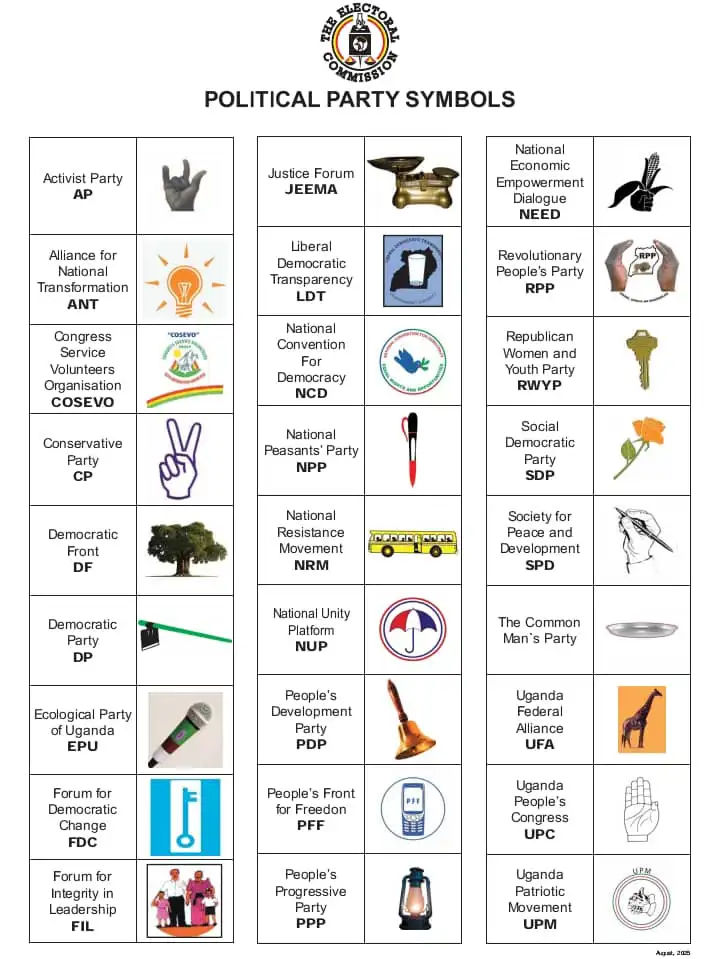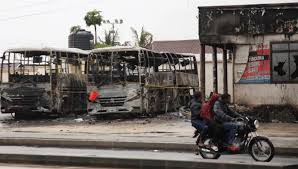In 2005, Uganda made a major political shift by returning to a multiparty system after years under a one-party structure.
This change came after a national referendum where citizens voted to allow different political parties to operate freely.
To guide the new system, the government passed the Political Parties and Organizations Act of 2005. This law set clear rules on how political parties should be formed, registered, and managed.
Under this law, every party must be officially registered with the Uganda Electoral Commission (EC).
The EC maintains an updated list of all active parties in the country. When registering, each party must declare its name, colours, slogan, and symbol.
These symbols are especially important because they appear on ballot papers during elections. For many Ugandans — especially in rural areas — the symbol is the easiest way to recognize and vote for their preferred party.
Uganda’s political symbols range from simple items like umbrellas and ladders to more meaningful icons such as a lamp, a bus, or a handshake. These are not chosen randomly. Parties carefully select symbols that reflect their values, vision, and promises to citizens.
For instance:
An umbrella may represent protection and shelter.
A lamp may stand for guidance and hope during difficult times.
A bus could symbolize progress and movement toward a shared destination.
Once approved by the EC, no two parties can use the same symbol or anything that looks too similar — to avoid confusing voters.
Today, Uganda has many registered political parties, from long-standing groups that existed before independence to new ones that emerged after multiparty politics was restored. These parties represent the country’s diverse voices, ideas, and interests.
The introduction of party symbols has helped make democracy more inclusive. It ensures that even citizens who cannot read can still vote confidently by simply identifying their party’s symbol. This is one of the most important ways the 2005 Act has made elections fair and accessible for all.



